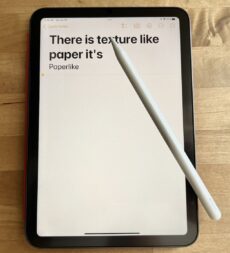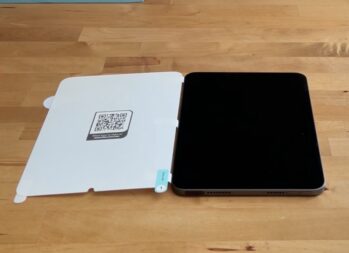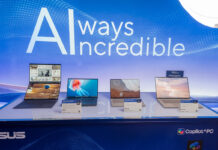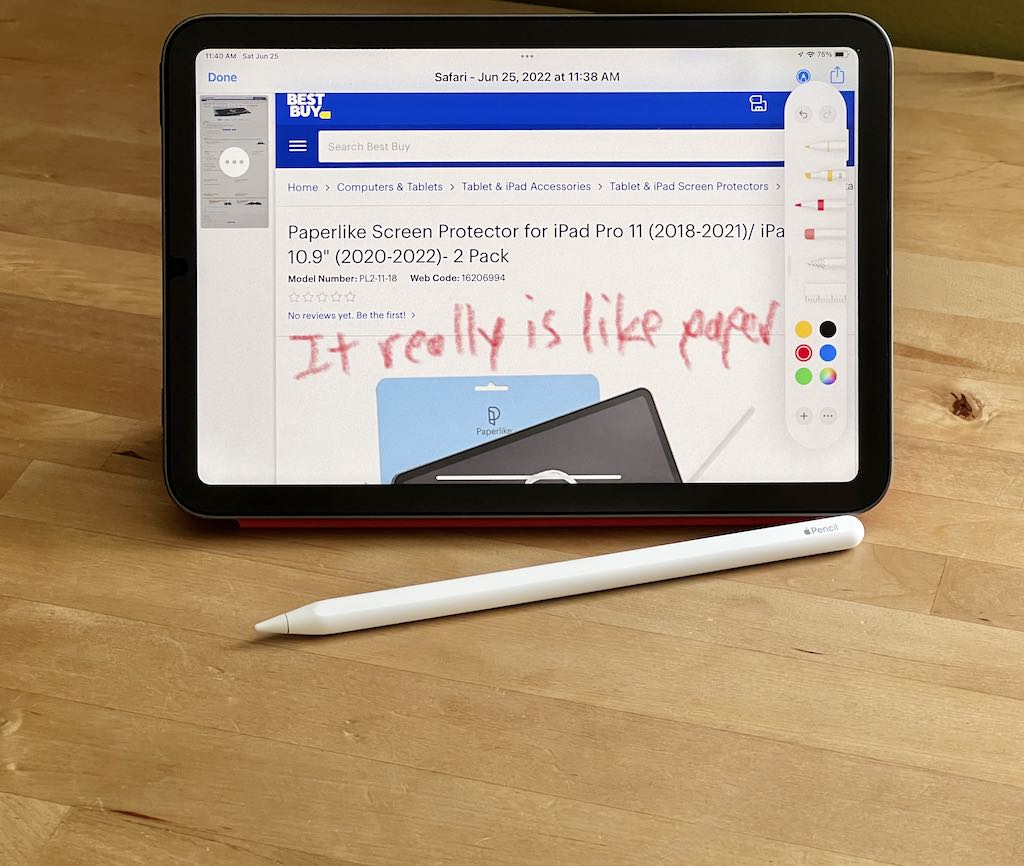 It’s always been a good idea to protect your iPad with a screen protector. Putting a thin, adhesive film over top of the display may not prevent it from shattering if your drop it on a hard surface, but it will keep the glass fragments and splinters from going everywhere. More importantly, it provides protection from scratches. Trust me, there are few things more distracting than a scratch on a tablet’s screen. Once you see it, you’ll obsess over it. Though there are plenty of options for screen protectors out there, Paperlike has a unique approach to iPad screen protectors. This company says its version is made for “creators and doers.”
It’s always been a good idea to protect your iPad with a screen protector. Putting a thin, adhesive film over top of the display may not prevent it from shattering if your drop it on a hard surface, but it will keep the glass fragments and splinters from going everywhere. More importantly, it provides protection from scratches. Trust me, there are few things more distracting than a scratch on a tablet’s screen. Once you see it, you’ll obsess over it. Though there are plenty of options for screen protectors out there, Paperlike has a unique approach to iPad screen protectors. This company says its version is made for “creators and doers.”
I tried one out with my iPad. Here’s what to expect from Paperlike, and what makes this company’s screen protector such a compelling choice for anyone who uses a stylus with their iPad.
Why use the Paperlike screen protector?
Paperlike’s screen protector is aimed at “creators and doers.” That means iPad owners who regularly use a stylus like the Apple Pencil. I have an iPad mini 6 that I use with an Apple Pencil 2. I’m not drawing with it, but I do use the combination for taking notes. It’s a great feature, but there is one area where the digital version of a notepad falls short. The iPad’s screen is extremely slippery and the stylus tip is plastic. There is a lot of sliding around as a result, which makes the experience just slightly off.
When writing that’s a relatively minor annoyance, but if you spend a lot of time drawing and sketching on an iPad, that slipperiness could be a problem as it can impact precision. What would make the experience perfect would be an iPad screen with a paper-like texture instead of being slick glass. That’s where Paperlike comes in.
Paperlike was designed to provide that paper-like experience on an iPad. The thin plastic sheet is embedded with Nanodots. It provides a texture like paper, with just the perfect amount of friction, while also minimizing stylus tip wear. As an added bonus, the matte texture of the Paperlike screen protector cuts down on glare—another downside of the iPad’s glass screen.
Paperlike is designed for easy application
The elephant in the room when it comes to screen protectors is application. It can be difficult to line up a screen protector perfectly. It’s tough enough with a smartphone but even more difficult with a tablet’s big display. With the adhesive, you usually only get one crack at it. I’ve done this many times over the years and there is a long list of unpleasant things I’d rather do than apply a screen protector.
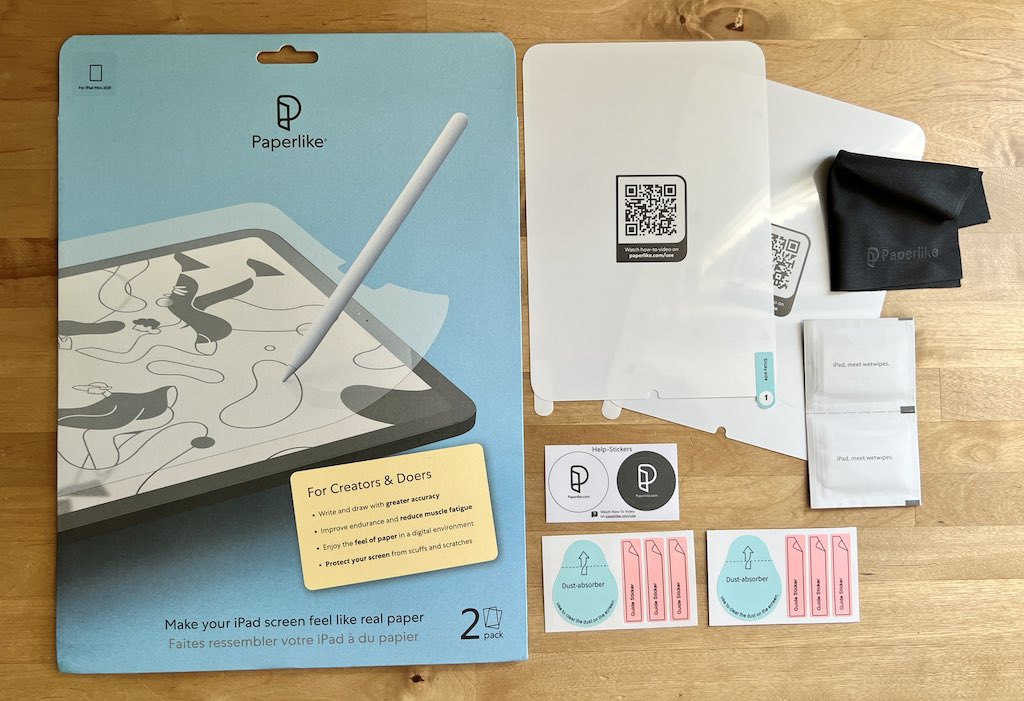 However, part of the Paperlike appeal is that the company has gone to great lengths to make the application process as easy as possible, minimizing the chances that you’ll mess it up. This includes a full complement of cleaning supplies in the package, two screen protectors, a process that includes multiple labelled stickers to keep the protector properly aligned while minimizing contact, and a very helpful step-by-step video.
However, part of the Paperlike appeal is that the company has gone to great lengths to make the application process as easy as possible, minimizing the chances that you’ll mess it up. This includes a full complement of cleaning supplies in the package, two screen protectors, a process that includes multiple labelled stickers to keep the protector properly aligned while minimizing contact, and a very helpful step-by-step video.
The only thing not included is a credit card (or something similar) for smoothing out air bubbles but less disposable plastic in a package is a good thing.
So. Does Paperlike live up to expectations in the application department? Did the company actually manage to design an application process that minimizes stress and makes it difficult to mess up?
I would say they nailed it. As you’ll see in the review video, I was able to install the Paperlike screen protector on my iPad mini with minimal fuss. The one issue I ran into is that I wasn’t as thorough as I should have been with the final step in the pre-install cleaning. I missed a bit of dust and as a result, it was trapped underneath the screen protector. It doesn’t impact functionality and I soon stopped noticing it, but there’s a lesson there. The pre-installation cleaning process is very important—don’t rush through it.
If you somehow manage to mess it up, there is a second application in the package. Ideally that’s meant for an installation later on when the original begins to wear, but it’s good to know there is a backup just in case.
How does the Paperlike screen protector impact iPad functionality?
I have to admit, I really like the Paperlike screen protector. It adds just the right amount of texture to make writing with the Apple Pencil feel natural. It’s not rough, just not smooth. Going back to another iPad with a bare screen is a bit of a letdown. The same functionality is still there, of course, but the stylus to glass experience feels a little artificial.
The matte finish of the Paperlike screen protector also makes a big difference when it comes to screen glare and reflections. I was a little worried that this screen protector might impair parts of the iPad experience. In particular, I was concerned that putting matte film over the display might cut down on sharpness and brightness. There is also potential for impact to the user touchscreen experience.
Those concerns turned out to be non-issues. The feeling when swiping is slightly different, but not weird. And the iPad is just as responsive as always. Video and text remained clear, sharp, and bright. I didn’t notice more fingerprints or smudges. It’s also so thin that no protective case should be affected. There really was no downside to installing the Paperlike screen protector, just wins.
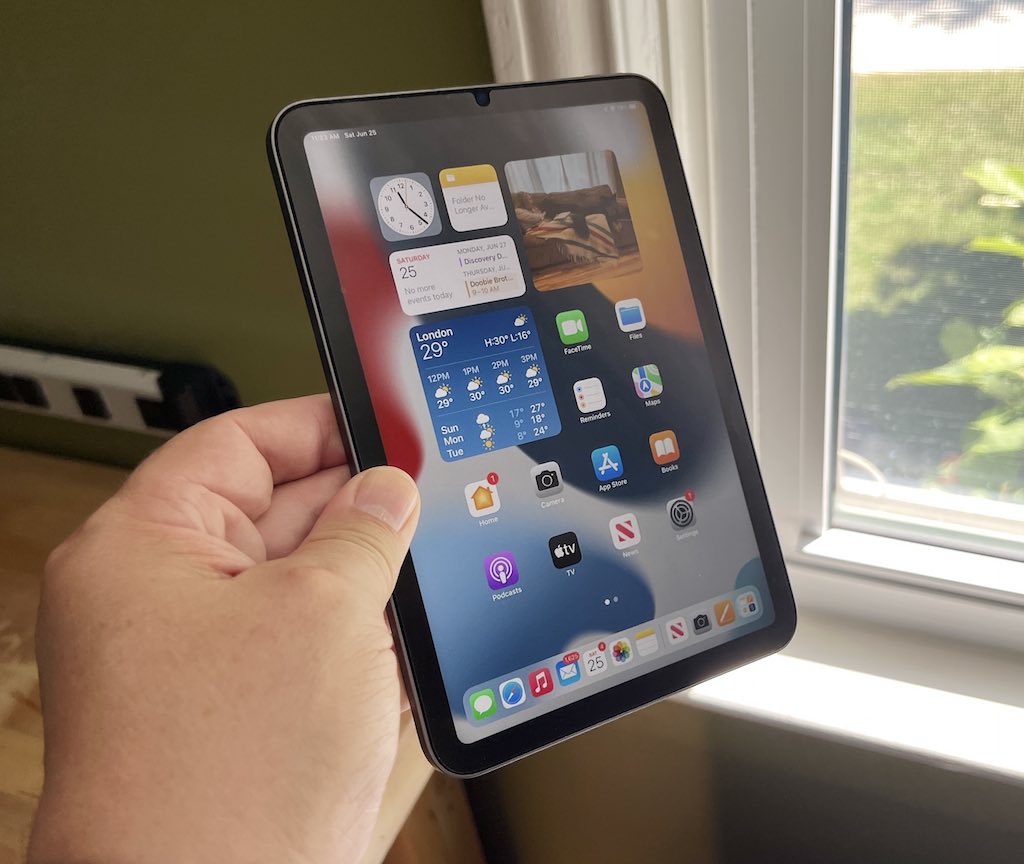
If you use a stylus, Paperlike is a worthwhile iPad upgrade
A screen protector is a solid investment if you own an iPad. It will save that brilliant display from scratches. If you use a stylus with your iPad, then you should definitely be looking at the Paperlike screen protector. Offered in sizes to fit multiple iPads including the latest iPad Air, iPad Pro, and the iPad mini 6 version that I tested, Paperlike delivers protection, an upgraded paper-like input experience, and glare reduction—in addition to protection.

